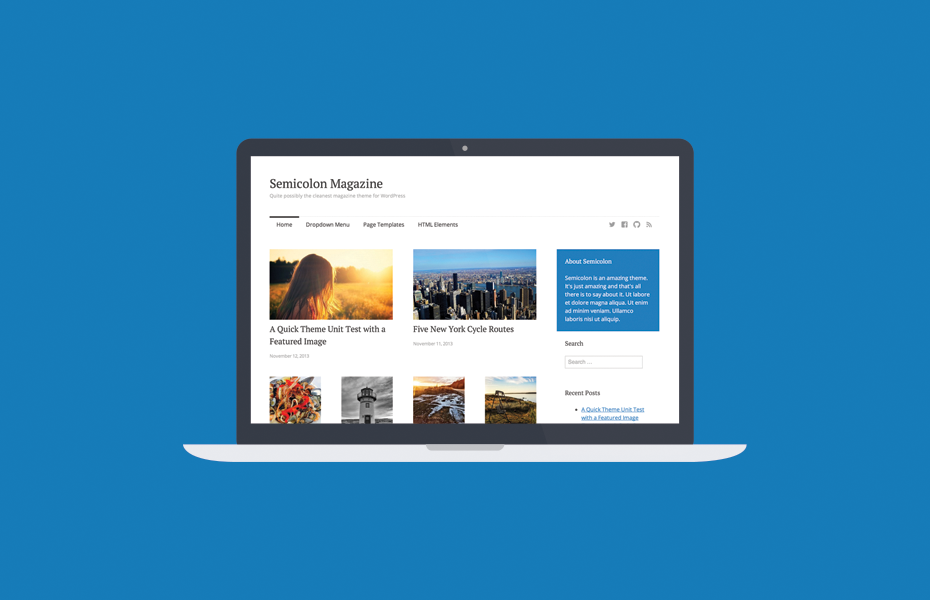Semicolon is a simple and clean magazine theme for WordPress. It has a responsive layout, clean and easy to read typography, a unique grid layout with featured posts support, a few widget areas, a special menu for your social profiles and much more.

Demo, Download & License
A demo of the Semicolon magazine theme is up and running on semicolon.kovshenin.com, feel free to look around and click stuff. If you’re looking to download the latest version of the theme, head over to the WordPress.org themes directory. Don’t forget to rate the theme! Semicolon is based on the _s starter theme and is licensed under the GNU GPL v3.
Featured Posts
Featured posts in Semicolon are a bit unique, and you’ll need the Jetpack plugin installed and active on your site. To mark posts as featured, you’ll first have to configure Jetpack’s Featured Content module from Appearance → Customize → Featured Content. You’ll be able to select a tag for all your featured posts.
When tagging your posts with the selected featured tag, you’ll notice that some of them double in size in the grid layout, and the latest two featured posts are also bumped to the top of the front page.
If you’re wondering why a certain featured post hasn’t doubled in size, that’s probably because it’s at a position which would cause it to wrap to the next row if doubled, thus breaking the grid.
If you’re experiencing weird sizes with your thumbnails in Semicolon, you can use the Regenerate Thumbnails or the Photon module from Jetpack to correct that.
Custom Colors
The Custom Colors feature in Semicolon is powered by Jetpack’s Custom CSS module. After installing Jetpack and activating the module, you’ll see several extra options in the theme customizer (Appearance → Customize). There’s also an “Auto Contrast” switch that will make sure your text remains readable regardless of what colors you have picked.
Social Menu
Semicolon ships with support for over 20 social networking websites, including Twitter, Facebook, Google+, YouTube, GitHub, Tumblr, and others. To add social profiles icons to the theme, you’ll have to create a new menu under Appearance → Menus.
Hit “create a new menu” and add some items for your social profiles using Custom Links. When you’re done, assign the newly created menu to the “Social Menu” theme location. Visit your home page and you’ll see that your links are now icons. If you’re looking for the RSS feed icon, simply use your feed address as the URL for a custom link, such as https://konstantin.blog/feed.
Related Posts
The magazine theme has a “related posts” section on single posts. By default, it uses a simple algorithm to fetch recent posts in the same category. If you’d like more control over related posts, Semicolon supports the popular YARPP plugin.
Author Bios
Semicolon displays author bios at the end of each post. If you’d like to customize the avatar, the display name and the description, you can do that from your profile settings in Users → Your Profile.
Widget Areas
Semicolon has four widget areas in total. Three on the side, and one at the bottom. The three widget areas on the side differ only in background color, and you’ll usually want to use just one widget in the primary section, which has a blue background to attract attention. It’s pretty useful for things like newsletter subscriptions.
The footer widget area is less prominent and is useful mainly for links. Widgets in the footer area are stacked horizontally and you shouldn’t be using more than three. Custom Menu widgets work best in the footer area.
Support
Please use the WordPress.org forums for support and feedback.